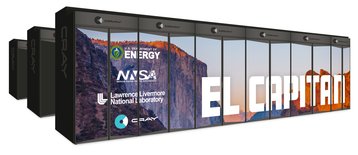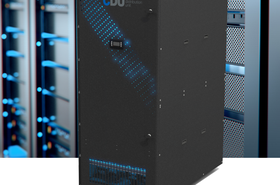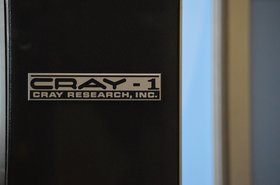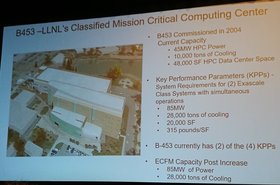The upcoming El Capitan supercomputer will feature AMD CPUs and GPUs and boast a peak performance of more than 2 exaflops.
The system, set to be delivered in early 2023, will be housed at the Lawrence Livermore National Laboratory and used by the National Nuclear Security Administration. Were it operational today, it would be more powerful than the next top 200 supercomputers combined.
Feel the power
El Capitan is set to use Cray’s Shasta supercomputing architecture, which can support multiple processor types.
When the supercomputer was announced last year, the Department of Energy took the unusual step of not disclosing the processors that it would use. Using a late-binding decision contract, the agency intentionally decided to wait as long as possible to choose a processor technology, to ensure it got the best chips at the best price.
"And so we did that and we were able to make significant improvements to the system through that process, and we're very pleased to be able to announce that we'll be getting the processors, both the CPUs and the GPUs from AMD," Bronis de Supinski, LLNL CTO told DCD in a media briefing.
"[One] of the most important things that will be announcing is that the performance of the system will be greater than 2 exaflops, and that's double-precision. Our previous announcement said that it would be greater than 1.5 exaflops. So this represents a significant increase in the expected performance of the system."
AMD declined to provide details about the 'Genoa' CPU in El Capitan, or the upcoming Radeon Instinct GPU. But, in the briefing, AMD Forrest Norrod, AMD data center and embedded systems group SVP and GM, teased that more information may be revealed at its analyst day on Thursday, March 5.
Steve Scott, SVP and CTO of Cray's parent HPE, said that the liquid-cooled system would have a power envelope between 30MW and 40MW, adding that they expected the final figure to be "closer to 30MW."
The $600m El Capitan will be used to maintain the nuclear weapons stockpile, and virtually test future weaponry.
"So it's important to understand that we use these systems we procure for the NNSA's mission, and in particular, it's part of the Advanced Simulation and Computing Program, which uses simulations to certify the country's nuclear stockpile is safe, secure and reliable," de Supinski said.
"[We're ensuring] that basically the stockpile will not have anything go wrong with it when - hopefully, we're not using it or god forbid that we should actually have to use it - but it will work as intended."
El Capitan will join two other DOE exascale systems, Argonne's Aurora and Oak Ridge's Frontier, set to launch in 2021. Both will be delivered by HPE, through Cray, with the former sporting Intel chips and the latter AMD.





